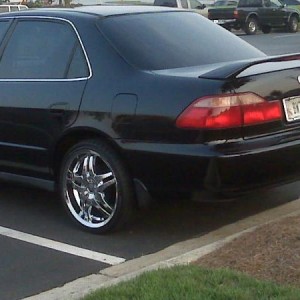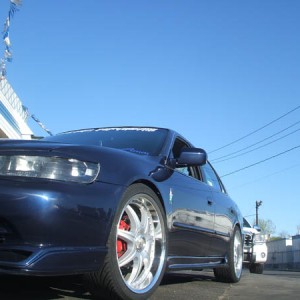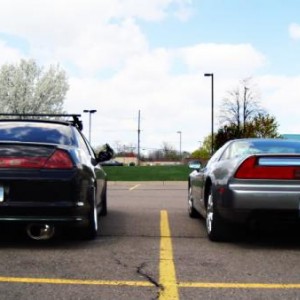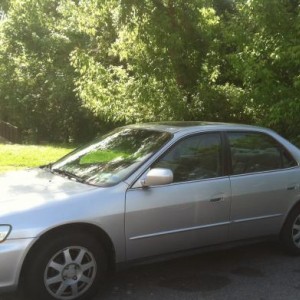determinasian
New Member
Hi everyone, I have a 1999 Accord LX with the F23A4 ULEV engine in California and an automatic transmission. I first noticed that my oil and coolant were mixing (looks like milk coffee) when I took off the radiator cap to check the coolant levels due to overheating. I went to the dealership and they said I have a cracked block, so I bought a black valve cover F23A engine with ~46,000 miles on it from HMotorsOnline and I'm trying to replace the engine. This is my first time attempting something like this; I've only ever changed my oil.
I'm trying to determine which new parts I need to buy, and these are what I have so far:
1. New radiator, radiator cap, and radiator hoses (because I don't want any of the old oily coolant in my new engine; should I simply flush my current radiator out instead? Also, how do I flush the heater system? There was some oily coolant mixture in the heater hose when I removed it)
2. New water pump (Is this necessary?)
3. New spark plugs
4. New timing belt (Might as well replace it while the new engine's already out and easy to work with?)
5. Lots of Honda Coolant Type 2 (Should I stick with Honda's coolant? Or just use whatever green coolant thing?)
6. Honda ATF DW-1 (Should be able to replace the old ATF-Z1 with DW-1 right? Can I mix the two since I won't be able to get all of the old ATF-Z1 out?)
Also, according to Steve at HMO, all I need to do to make the new engine equivalent to my current ULEV engine is to reuse my current intake manifold, distributor, and valve cover. Is that it? Does the current exhaust manifold need to be reused as well because of the different sensor for ULEV? Does the valve cover really have to get swapped out? I like the new black valve cover and black exhaust manifold heat shield and it would be nice to be able to keep them.
I'm also having a difficult time removing the automatic transmission fluid drain plug; how hard should I be going at it with an ~18" breaker bar? I was watching a video on removing it and the guy was kicking his breaker bar to get it open. Some comments for that video said to use my floor jack to push the breaker bar. Would this be harmful somehow?
Not sure if this should go in this subforum or the DIY subforum.
Thanks for your guys' time.
I'm trying to determine which new parts I need to buy, and these are what I have so far:
1. New radiator, radiator cap, and radiator hoses (because I don't want any of the old oily coolant in my new engine; should I simply flush my current radiator out instead? Also, how do I flush the heater system? There was some oily coolant mixture in the heater hose when I removed it)
2. New water pump (Is this necessary?)
3. New spark plugs
4. New timing belt (Might as well replace it while the new engine's already out and easy to work with?)
5. Lots of Honda Coolant Type 2 (Should I stick with Honda's coolant? Or just use whatever green coolant thing?)
6. Honda ATF DW-1 (Should be able to replace the old ATF-Z1 with DW-1 right? Can I mix the two since I won't be able to get all of the old ATF-Z1 out?)
Also, according to Steve at HMO, all I need to do to make the new engine equivalent to my current ULEV engine is to reuse my current intake manifold, distributor, and valve cover. Is that it? Does the current exhaust manifold need to be reused as well because of the different sensor for ULEV? Does the valve cover really have to get swapped out? I like the new black valve cover and black exhaust manifold heat shield and it would be nice to be able to keep them.
I'm also having a difficult time removing the automatic transmission fluid drain plug; how hard should I be going at it with an ~18" breaker bar? I was watching a video on removing it and the guy was kicking his breaker bar to get it open. Some comments for that video said to use my floor jack to push the breaker bar. Would this be harmful somehow?
Not sure if this should go in this subforum or the DIY subforum.
Thanks for your guys' time.







![2012 01 31 15.32.38[1] (600x450)](/forums/data/xfmg/thumbnail/3/3847-dcc557e6969d0bab3bb9a4b96593be69.jpg?1695467882)